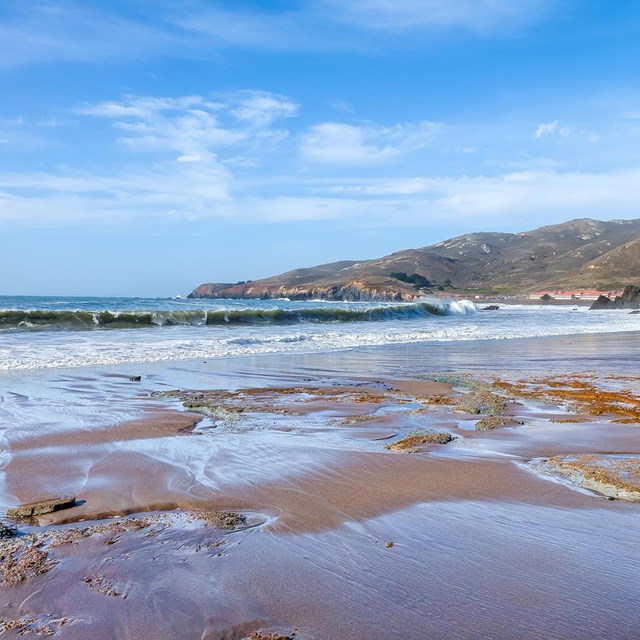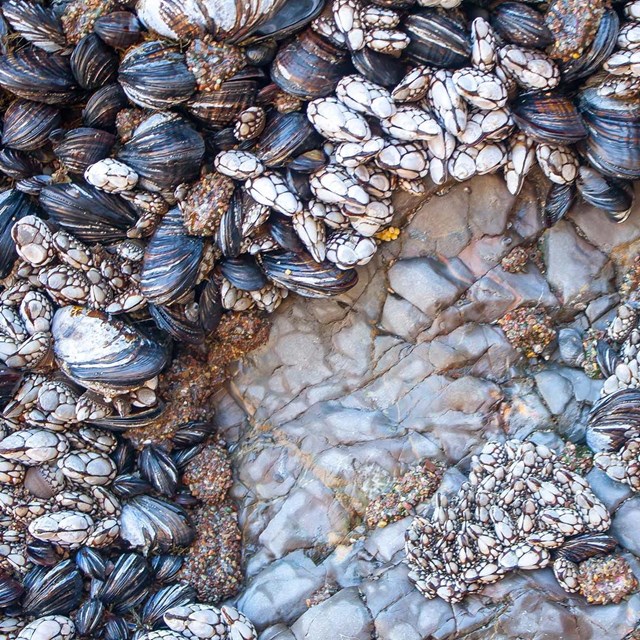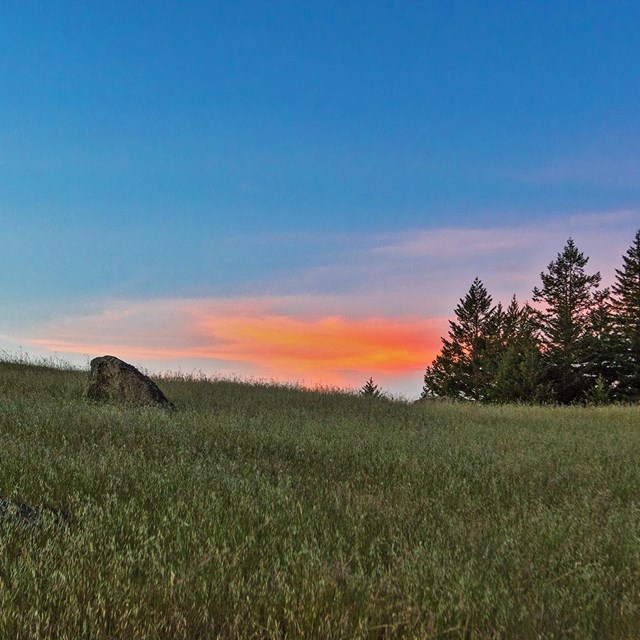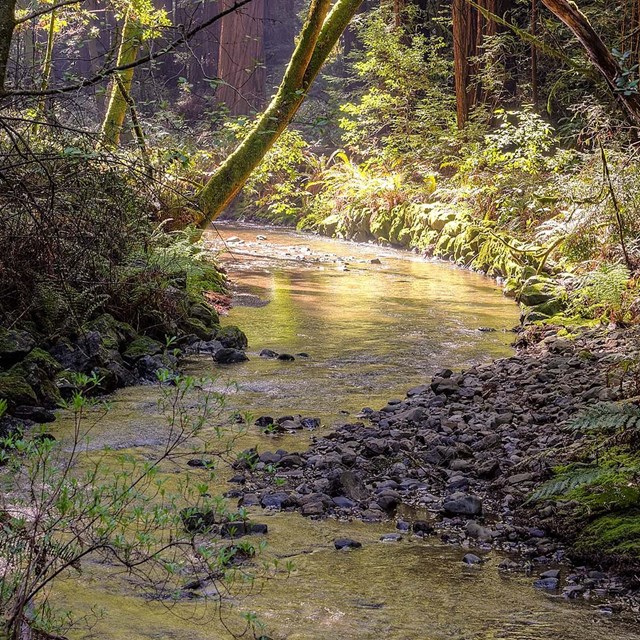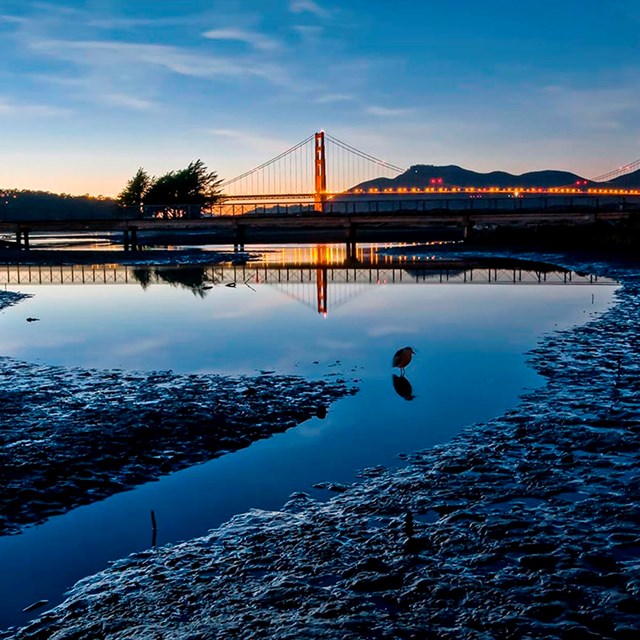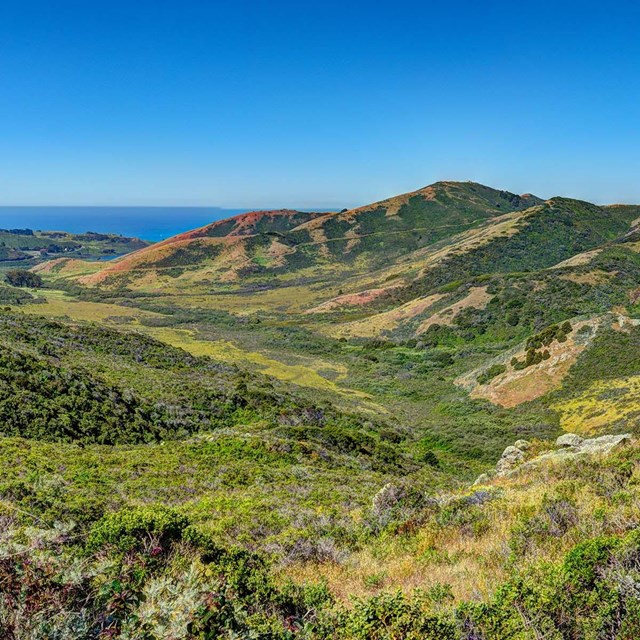|
From the first explorers landing on the Pacific, to modern day scientists studying endangered species, to a small child seeing a sea star for the first time, the coast is a place of discovery. Golden Gate covers seven different ecological zones starting with the open ocean and the Gulf of the Farallones National Marine Sanctuary. Rocky coasts shelter tide pools and show off the wide variety of geologic formations in the park. Sandy beaches are playgrounds to the public as well as home to many plants and animals. Estuaries begin the transition from sea to land, mixing fresh and salt waters and terrestrial and marine species. Marshes such as Crissy Field, Rodeo Lagoon, and Big Lagoon spread out in their mucky green glory, marshes being one of the most productive habitats on earth. Where low coastal hills meet the ocean as in the Marin Headlands and Pacifica, scrublands and grasslands cover the rocky earth like a skin. Looking out over the grassy hills and the dark green patches of scrub, you may think that you are in the Mediterranean, except for the fog blowing in to the coast. Always moving through the land are the green ribbons of creeks such as Redwood, Lagunitas, and Lobos Creek. Come discover the nature of Golden Gate. There is more than meets the eye!
Explore the habitats of Golden Gate
|
Last updated: April 11, 2018

